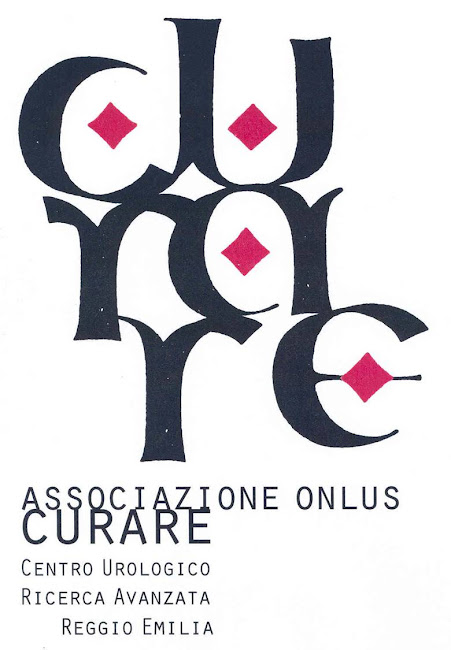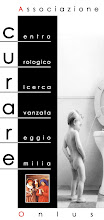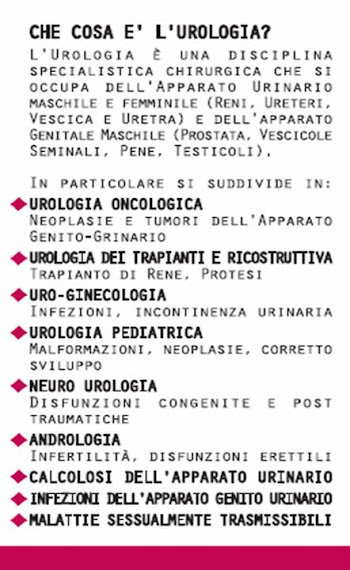 Prestigioso riconoscimento al lavoro della struttura complessa di Urologia Santa Maria Nuova di Reggio Emilia: Abstract accettato al Meeting Annuale AUA (American Urological Association) che si terrà ad Aprle 2009 a Chicago (IL, USA).
Prestigioso riconoscimento al lavoro della struttura complessa di Urologia Santa Maria Nuova di Reggio Emilia: Abstract accettato al Meeting Annuale AUA (American Urological Association) che si terrà ad Aprle 2009 a Chicago (IL, USA).Lo sling bulbouretrale modulabile è efficace anche nell'incontinenza maschile grave:
Un alternativa allo sfintere artificiale.
Adjustable bulbourethral sling is effective also in severe male incontinence: An alternative to artificial sphincter.
Ahmad Hind°, Giovannalberto Pini*, Domenico Viola°, Ferdinando Martino°, Leonardo Manoni°, Roberto Rossi° and Sergio Leoni.°
°Arcispedale Santa Maria Nuova (Reggio Emilia, ITALY)
Adjustable bulbourethral sling is effective also in severe male incontinence: An alternative to artificial sphincter.
Ahmad Hind°, Giovannalberto Pini*, Domenico Viola°, Ferdinando Martino°, Leonardo Manoni°, Roberto Rossi° and Sergio Leoni.°
°Arcispedale Santa Maria Nuova (Reggio Emilia, ITALY)
*Clinica Urologica Università di Modena e Reggio Emilia (MODENA, ITALY)
Abstract
Introduction and Objective: We report our experience with 35 consecutive patients underwent to bulbourethral adjustable sling ARGUS® system (Promedon SA,Cordoba, Argentina) for male incontinence.12 of them were affected by severe incontinence, 5 complicated by failed insertions of other prosthesis and 9 by radiation therapy. We analyze medium term results.
Methods: Patients underwent to sling between July 2006 and April 2008; all of them were studied with cystoscopy, pad test 20 min, pad per day, QoL questionnaire and full urodynamics study. We defined 8 mild, 15 medium and 12 severe incontinence. 3 patients with bladder neck stricture and 2 with bulbar urethral stenosis underwent endoscopic treatment 6 months before implants. Minimal time elapsed from original surgery was 12 months. Tension of sling was regulated under local anaesthesia.
Results: Urinary incontinence derived from: TURP (2), simple open prostatectomy (3), retropubic (27) and laparoscopic (3) radical prostatectomy. 9 of them received radiotherapy, 5 underwent to periurethral balloons system and 22 underwent perineal rehabilitation with poor results. Mean follow-up was 16.1 months (range 1-28 months). Clinical success, defined as completely dry or some drop leak at Valsalva manoeuvre, was in 32 (91.4%). 4 of them after increment of tension and 4 after decrement. 1 patient refused modulation after partial improvement. We removed sling in 2 patients(5.7%): the 1st because in suspicion of rectal wall perforation, not confirmed by the rectoscopy (seminal vesicles direction); the 2nd because persistent obstruction although modulation. 11 (31.4%) patients suffered perineal pain regressed in 30 days. There were neither infection nor erosion nor rejection. Mean Qmax was 13 ml/sec (range 12- 20ml/sec). Post voiding residual was less than 40ml.
Conclusions: Bulbourethral adjustable system offers ready results, as soon as catheter removal, easy adjustment under local anaesthesia, physiological voiding, sparing of bulbocavernous muscles. The shape and adaptability of the silicon foam central pad to the urethra offer the advantage of using low tightening pressure. The best results seem to be offered, in terms of improvements and QOL, in case of severe incontinence. We believe the ARGUS® system is an excellent and safe way to treat severe male incontinence. It effective also in patients complicated by failed insertions of other prosthesis and by radiation therapy, being an alternative to artificial sphincter, waiting for long term follow-up.









Nessun commento:
Posta un commento